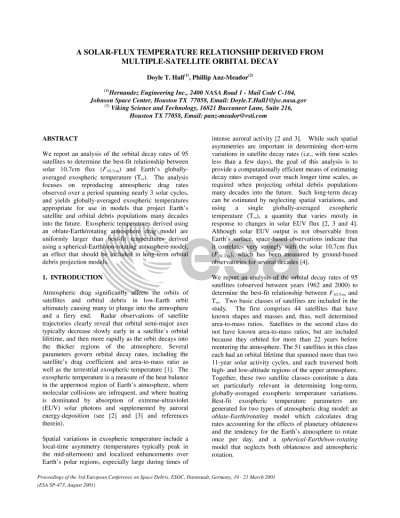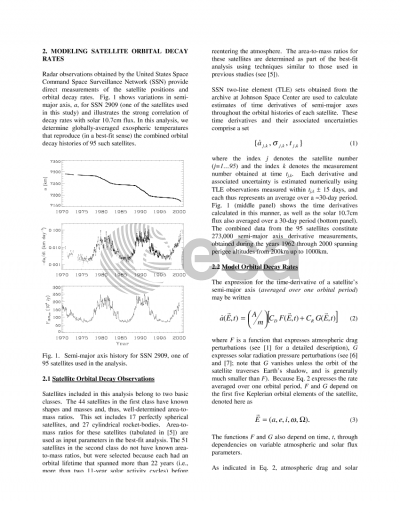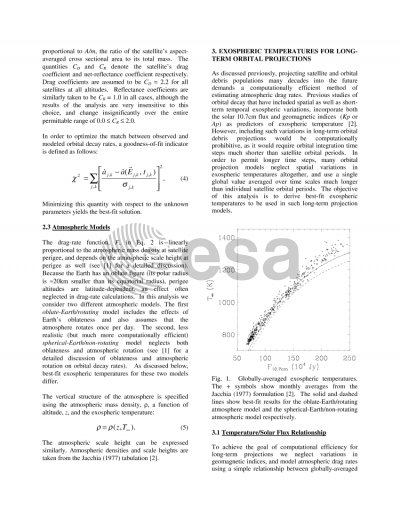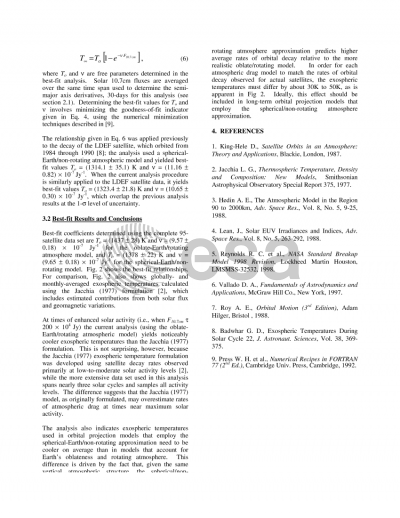Document details

Abstract
We report an analysis of the orbital decay rates of 95 satellites to determine the best-fit relationship between solar 10.7cm flux and Earth's globally-averaged exospheric temperature. The analysis focuses on reproducing atmospheric drag rates observed over a period spanning nearly 3 solar cycles, and yields globally-averaged exospheric temperatures appropriate for use in models that project Earth's satellite and orbital debris populations many decades into the future. Exospheric temperatures derived using an oblate-Earth/rotating atmosphere drag model are uniformly larger than best-fit temperatures derived using a spherical-Earth/non-rotating atmosphere model, an effect that should be included in long-term orbital debris projection models.
Preview





